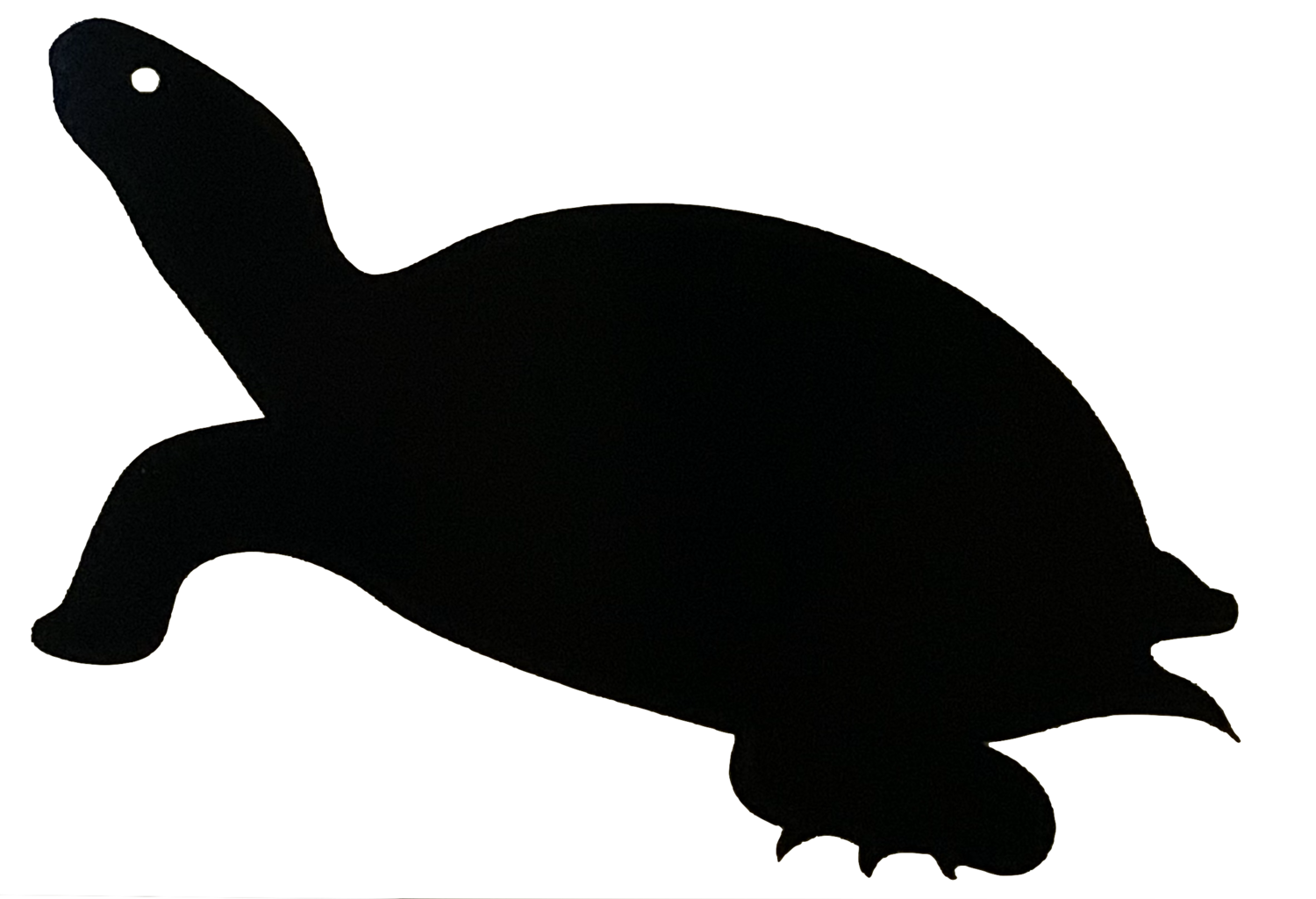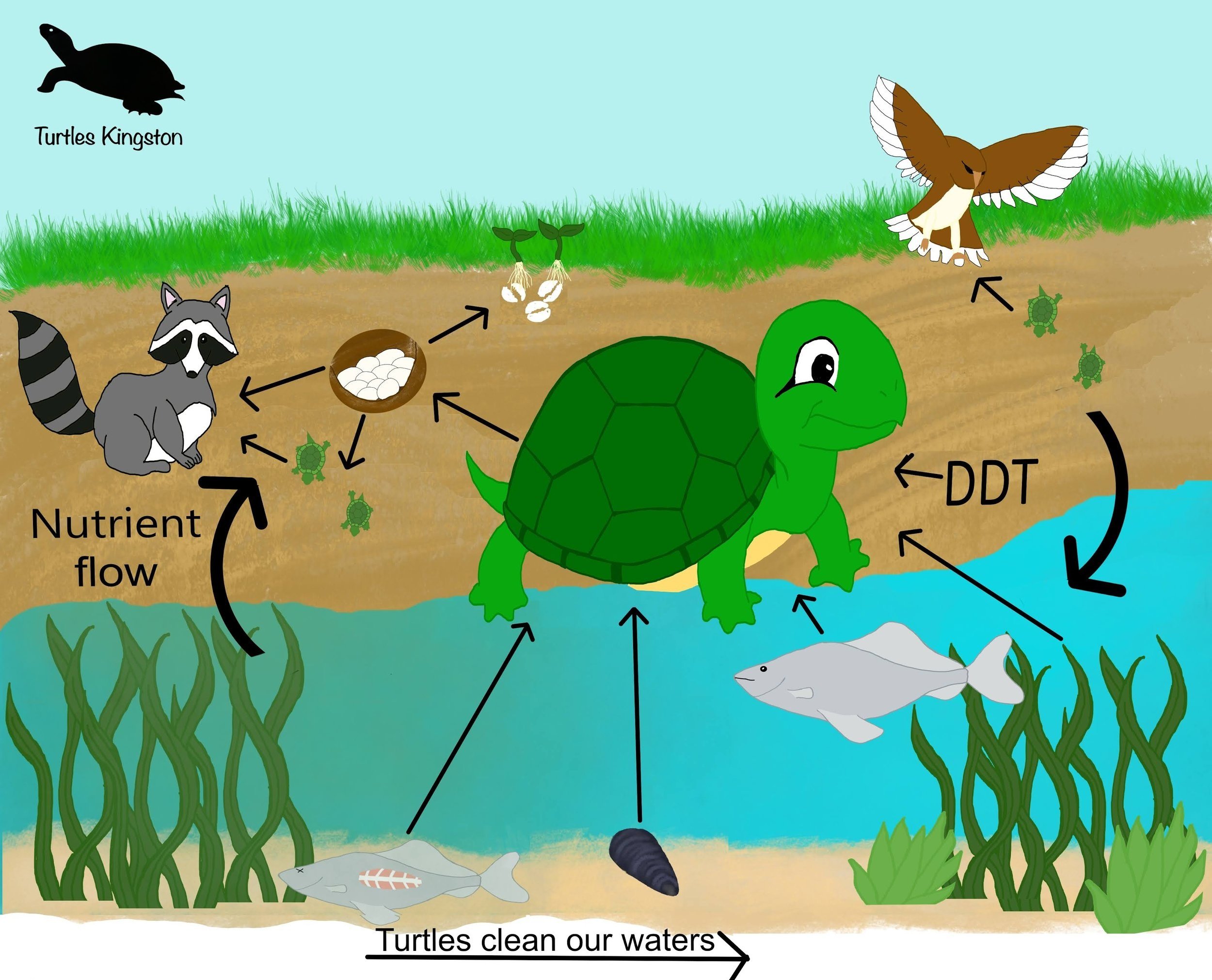Why are turtles important?
Did you know that turtles are a Keystone Species and that other species depend on their presence in the ecosystem? This means that aside from saving turtles to preserve turtle populations, we save turtles to keep wetland ecosystems healthy. Join us in exploring why turtles are an important part of our wetlands.
What is a keystone species?
A keystone species is a species that other species depend on in an ecosystem, and a species that would dramatically change that ecosystem if it were to disappear.
Turtles are important for various reasons including:
A snapping turtle ‘cleans up’ by snacking on a washed up dead fish (alientravelguide.com)
Wetland Custodians
Turtles are considered wetland custodians because they are omnivores, meaning they eat both plant and animal matter (alive or dead). Specifically, turtles eat a huge amount of bacteria producing carrion (decaying animal flesh) and decaying vegetation, which in turn keeps the water clean.
Transferring Nutrients between land and water
Turtles inhabit aquatic (water) and terrestrial (land) ecosystems as they pass between both systems during different stages of their life cycle and in different seasons. This means that they transfer energy and nutrients between both ecosystems. In both aquatic and terrestrial ecosystems turtles provide nutrients for plants and predators. Specifically, turtle eggs act as a food source for predators but also for plants as eggs / hatchlings that do not hatch will decompose, adding nutrients to the soil - specifically calcium from their egg shells. In addition, turtle waste spreads nutrients between aquatic and terrestrial ecosystems and even seeds!
Turtles move from water to land and back throughout the seasons and their mating and breeding rituals, bringing with them energy and nutrients.
A turtle is shown with a mini-ecosystem growing on its back (socialgrep.com)
Balancing and distributing plant species
Turtles act as a vessel between water and land for more than just nutrients, they can even eat and spread plant matter from one ecosystem to another. Some turtles - such as snapping turtles - often have a miniature ecosystem of moss and fungus on their backs! Turtles can spread plant seeds when they defecate, and transport snails, moss, and fungi from land to water and back. Turtles also help keep plants in check by eating them.
Hatchlings leave discarded egg shells rich in calcium (manitoulin.com)
Shaping the physical environment
Turtles can shape the environment by digging holes. They dig holes in order to lay their eggs but they will often dig additional holes in the process of finding that perfect spot. In addition, turtle eggshells are said to be able to help plants establish in the ground, as eggshells add nutrients to the earth that plants then take in via their roots. Additionally, eggshells help to stabilize sandy earth which aids plant growth.
Indicating changes in the environment
Turtles are a great source of data for monitoring the health of the ecosystem they live in. This is because of their longevity; scientists can tell if there is a new component affecting the wetland by monitoring the changes in turtles and their behaviour over the course of years.
Did you know?
Turtles stop aging once they reach maturity! In other words, turtles do not die of old age. This makes them the perfect study subject for understanding how changes in aquatic environments impact the animals living there. This also makes it hard to determine the age of a turtle, because after reaching maturity they do not develop any visible characteristics to identify their age, not even their size!
In conclusion
When we help turtles, we are helping the environment! Without turtles, harmful waste would build up in wetlands from decaying plant and animal matter, energy and nutrients would lose an important link between land and water, and the soil would not have the calcium and nutrient levels it does today. Remember that when you help turtles and turtle populations, you are saving a keystone species that keeps our ecosystems healthy and functioning at their best.




